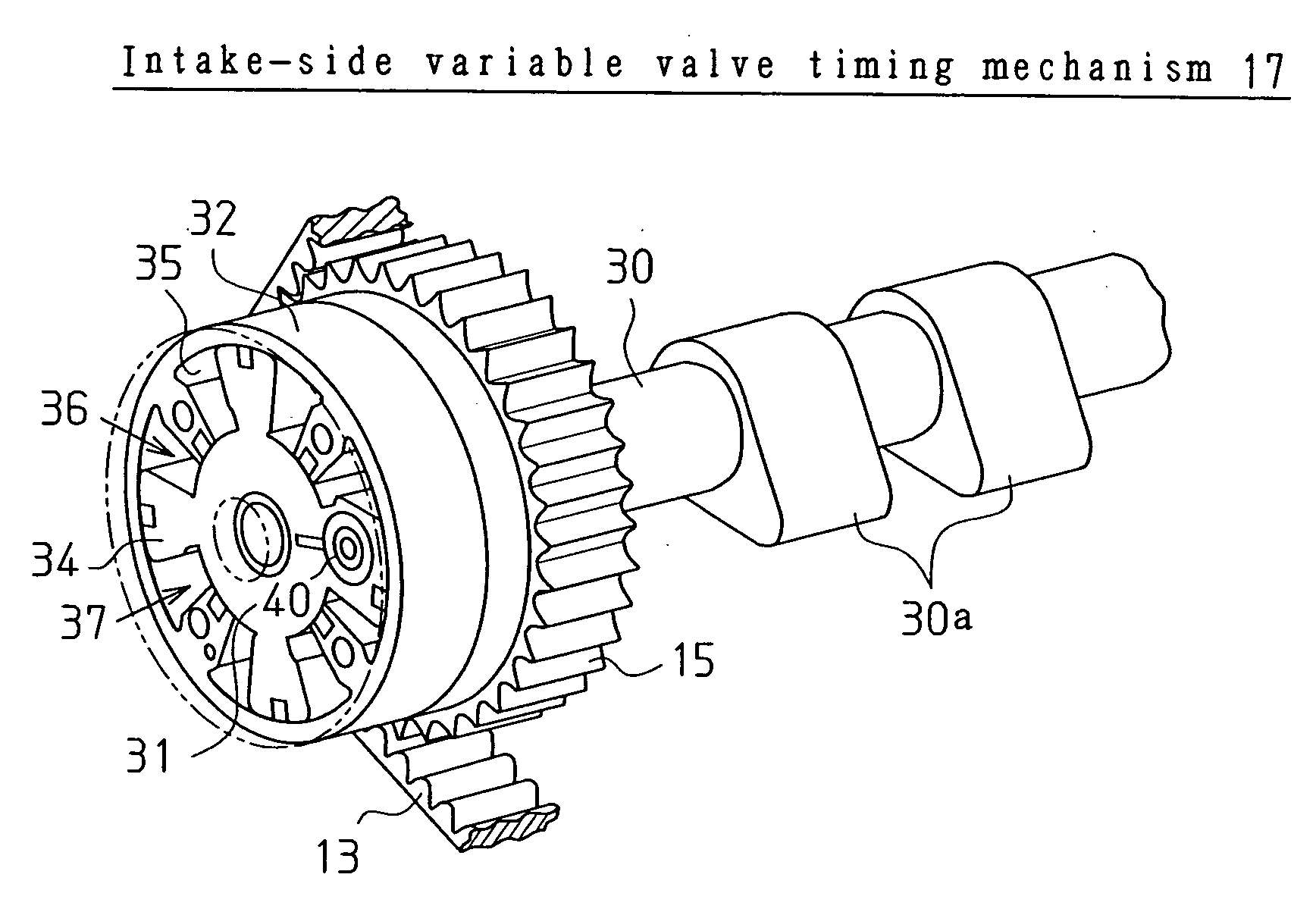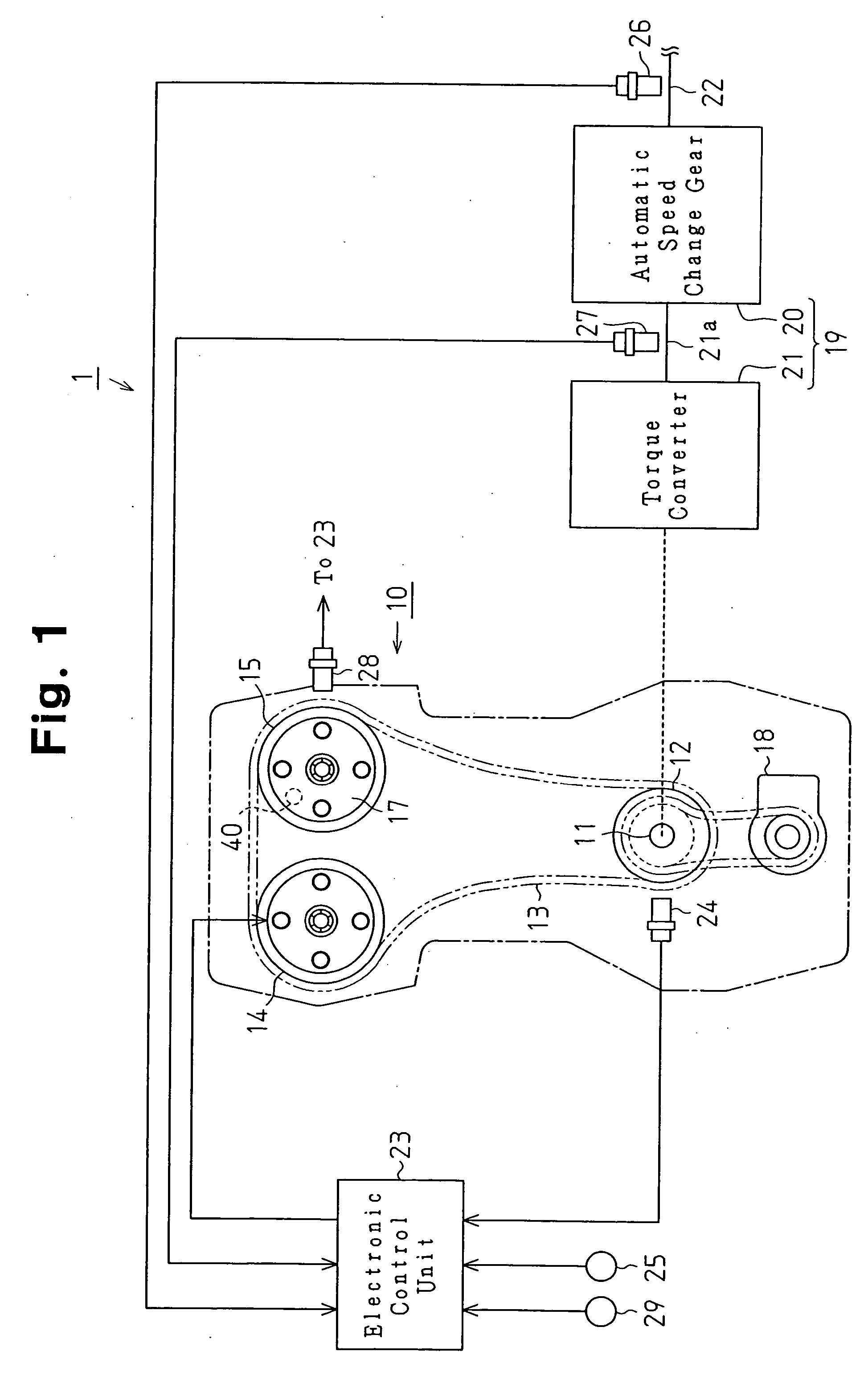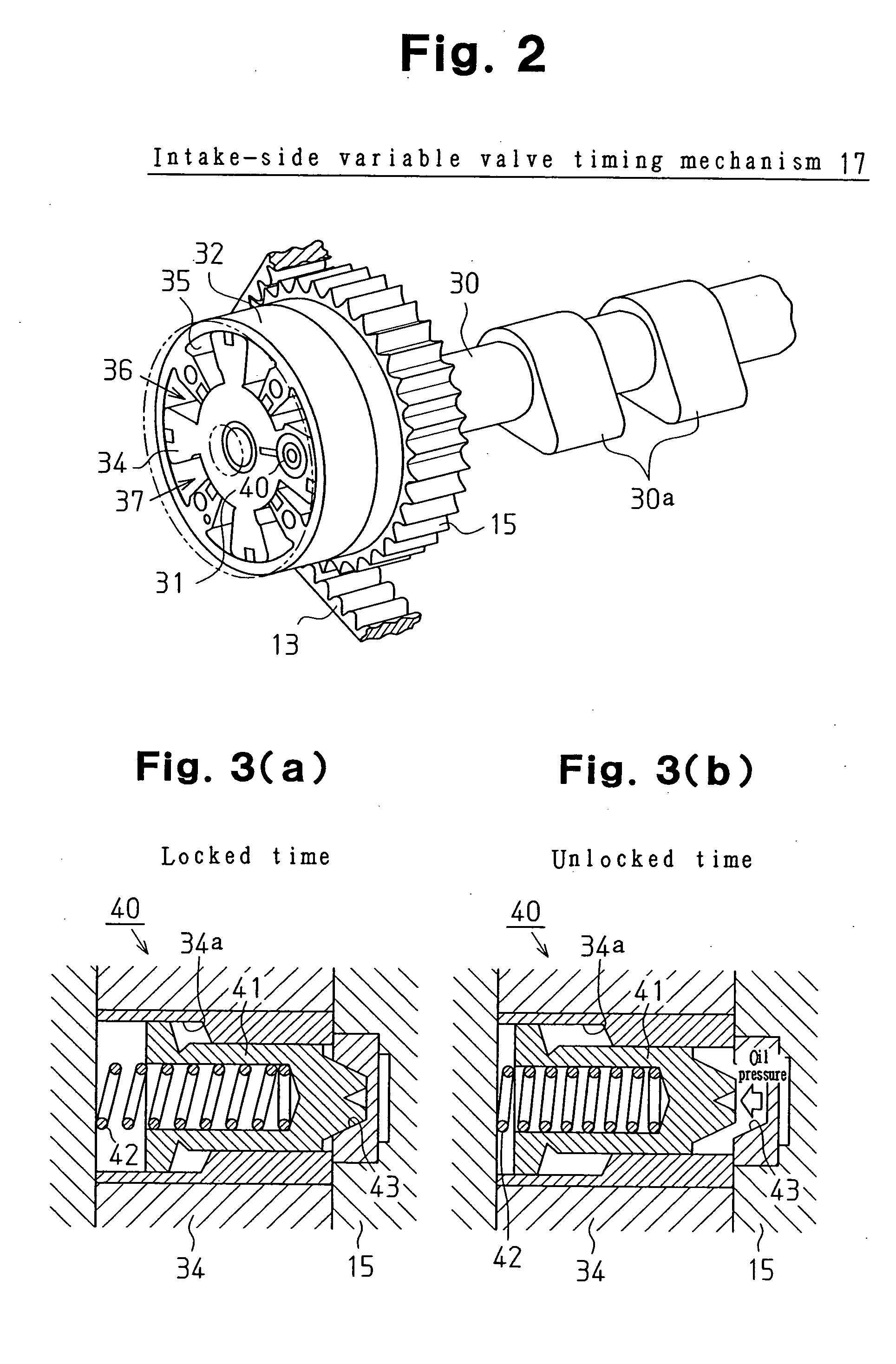Apparatus and method for controlling internal combustion engine
a control apparatus and internal combustion engine technology, applied in the direction of electrical control, non-mechanical valves, valve drives, etc., can solve the problems of deteriorating the combustion state, affecting and restricting the change of oil supply to the lock mechanism, so as to prevent the effect of reducing the follow-up performance of the valv
- Summary
- Abstract
- Description
- Claims
- Application Information
AI Technical Summary
Benefits of technology
Problems solved by technology
Method used
Image
Examples
first embodiment
[0037] A first embodiment embodying the present invention will now be described. FIG. 1 shows a schematic configuration of a vehicle to which this embodiment is applied. As shown in FIG. 1, at one end of a crankshaft 11, which is an output shaft of an internal combustion engine 10 mounted on a vehicle 1, a crank pulley 12 is fixed so as to be rotatable integrally. The crank pulley 12 is connected drivingly to an exhaust-side cam pulley 14 provided at one end of an exhaust-side camshaft and an intake-side cam pulley 15 provided at one end of an intake-side camshaft via a timing belt 13. The exhaust-side cam pulley 14 is connected to the exhaust-side camshaft, and the intake-side cam pulley 15 is connected to the intake-side camshaft via a variable valve timing mechanism 17, which functions as a variable valve actuation mechanism.
[0038] The crankshaft 11 is also connected drivingly to a pump 18 via, for example, a timing belt. The crankshaft 11 is connected drivingly to an axle 22 via...
second embodiment
[0130] In the above-described second embodiment, the degree of change restriction of the valve timing VI of intake valve may be set so as to be higher as the difference ΔVE increases. According to this configuration, the change of valve timing VI of the intake valve can be restricted so that a difference in the convergence speed between valves is a desired speed difference, and the temporary stagnation of increase in engine rotational speed NE can be restrained appropriately. Such a configuration can be realized by a configuration, for example, such that a smaller value is calculated as the upper limit value γ2 as the difference ΔVE increases.
[0131] In the above-described second embodiment, the processing in Step S106 for valve timing change processing may be omitted. This configuration can also be applied to an internal combustion engine that does not have the lock mechanism 40 and the lock mechanism 51.
[0132] The present invention can be applied to not only a hydraulically operat...
PUM
 Login to View More
Login to View More Abstract
Description
Claims
Application Information
 Login to View More
Login to View More - R&D
- Intellectual Property
- Life Sciences
- Materials
- Tech Scout
- Unparalleled Data Quality
- Higher Quality Content
- 60% Fewer Hallucinations
Browse by: Latest US Patents, China's latest patents, Technical Efficacy Thesaurus, Application Domain, Technology Topic, Popular Technical Reports.
© 2025 PatSnap. All rights reserved.Legal|Privacy policy|Modern Slavery Act Transparency Statement|Sitemap|About US| Contact US: help@patsnap.com



